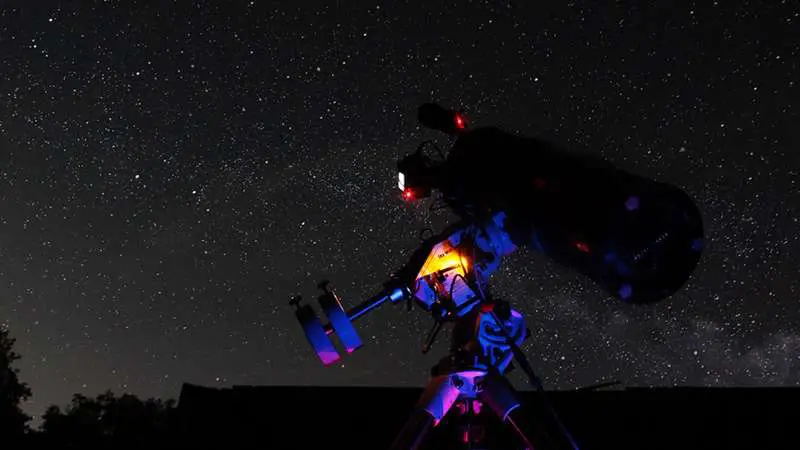Astronomy enthusiasts often ponder over the features and capabilities that make a good telescope. With various specifications and brands available in the market, it can be overwhelming to determine the essential quality of an astronomical telescope. In this article, I help you make an informed decision when choosing the perfect telescope for your stargazing adventures.
Regarding astronomical telescopes, there are several factors to consider, such as aperture, focal length, and type of telescope (refractor, reflector, or catadioptric). Each telescope type caters to specific observing needs and preferences. Still, one key factor stands out, playing a crucial role in your overall observation experience. So, what is the most important quality of an astronomical telescope?
The most important quality of an astronomical telescope is its aperture, which determines the amount of light the telescope can gather and, in turn, directly affects the level of detail and clarity of the celestial objects you observe. To maximize your astronomical experience, focus on choosing a telescope with an aperture of at least 2.8 inches (70 mm), but preferably more. A larger aperture allows for better resolution, enabling you to explore fainter objects and discover more intricate details of planets, stars, and deep-sky objects such as galaxies and nebulae.
In this article, you get
A solid understanding of the basics of telescopes
A deep dive into why specific qualities are important
A quick look at telescope mounts
A beginners guide for purchasing a refractor telescope or reflecting telescope
Answers to frequently asked questions about astronomical telescopes
By the end of this article, you’ll understand the most critical quality of telescopes and more.
Let’s dive right in.
Recommended For You
What is the Most Important Quality of an Astronomical Telescope? Understanding Telescope Qualities

When exploring the night sky, the quality of your telescope makes a big difference in what you can see. Let’s discuss three crucial attributes of an astronomical telescope: Aperture, Focal Length and Focal Ratio, and Resolution.
Aperture
The aperture is the diameter of your telescope’s lens or mirror, which is essential for capturing light from distant objects. The larger the aperture, the more light your telescope gathers, making that dim celestial object easier to see.
A good rule of thumb for beginners is to choose a telescope with at least 2.8 inches (70 mm) of aperture.
Be mindful that bigger apertures result in heavier and bulkier telescopes, so consider your storage and transportation needs when picking your stargazing companion.
Focal Length and Focal Ratio

The focal length is the distance from the telescope’s lens or mirror to where the image forms.
The focal ratio (f/ratio or f-number) is the focal length divided by the aperture.
A lower focal ratio like f/4 creates wider fields of view and brighter images, particularly useful for observing larger objects such as star clusters or extended nebulae.
On the other hand, a higher focal ratio like f/15 will give you more detailed views of smaller objects, such as planets or double stars.
Resolution

Resolution refers to the sharpness and detail visible in the images produced by your telescope.
The diameter of the objective lens or mirror is crucial to determining the resolution. A larger diameter allows your telescope to resolve finer details, which is especially helpful when observing closely spaced objects like double stars or lunar craters.
When comparing telescopes, consider the resolution to ensure you can explore the night sky with as many details as possible.
Importance of Aperture

The aperture is the most important quality of an astronomical telescope.
The larger the aperture, the greater your telescope can gather visible light. This light-gathering power results in brighter and more detailed images of celestial objects.
Let’s examine the aperture’s role in light-gathering ability, brightness, and detail.
Light Gathering Ability
A telescope’s aperture is the diameter of its objective lens or mirror.
Larger apertures collect more light, like catching rain in a big bucket.
For example, a telescope with a 12-inch aperture collects four times more light than one with a 6-inch aperture. With more light, you can see more faint objects and explore the wonders of the night sky more effectively.
Brightness and Detail
Increasing the aperture size allows you to collect more light and provides brighter, clearer images.
Bands of color on Jupiter or the delicate rings of Saturn become easier to see as the aperture size increases. With a larger aperture, you can spot more details in distant objects, like galaxies and star clusters.
Think of the aperture as the size of a window in your room. A bigger window lets in more sunlight and lets you see the details of your surroundings more effectively. Similarly, a larger aperture in a telescope brings the beauty and mysteries of the universe closer to you.
Other Significant Qualities
Optical Telescope Design

When you’re choosing a telescope, the optical design is essential. There are two main types: refractor telescopes and reflecting telescopes.
A refracting telescope uses lenses to gather light and is excellent for observing planets and the Moon.
Reflectors use mirrors to gather light, making them perfect for viewing deep-sky objects like galaxies.
Reflector telescopes also have a little secret: the bigger the mirror, the more light they can collect. And as you know, the larger mirror lets you see fainter objects in the night sky. So, whether you’re gazing at Jupiter or peering into the distant cosmos, picking the right optical design for your telescope is essential.
Mount Stability
A steady mount is vital to getting the best views of the heavens.
Telescopes sit on either an alt-azimuth or an equatorial mount.
Alt-azimuth mounts move up and down and side to side, making them simple to use. But there might be better choices for tracking objects as they move across the sky.
Equatorial mounts, on the other hand, follow the movement of stars and other celestial objects smoothly. They’re a bit trickier to set up, but they’re worth the extra effort for the steady views they provide.
So, when you’re scouting for your perfect astronomical telescope, remember to consider the stability of its mount!
Selecting the Right Telescope

Assessing Your Needs
Before choosing a telescope, consider what you want to observe.
If you’re interested in viewing solar system objects like planets and moons, a 4-5-inch diameter telescope should work well.
A larger aperture will help you see more detail for deep sky objects like galaxies and nebulas.
Are you into astrophotography? Yes, telescopes with larger apertures collect more light, providing brighter and sharper images. Having bright and sharp images is important. However, size and weight can affect portability and convenience, so consider these factors.
Budget and Quality Considerations
When shopping for a telescope, the most critical factor is its aperture. While a large telescope with a bigger aperture generally performs better, it can also be more expensive and bulky.
Finding a balance between cost, size, and performance is essential. Look for a telescope with high-quality optics and a stable, smooth mount – these features will enhance your observing experience.
To make your decision easier, consider the following tips:
- Set a realistic budget – investing in a smaller, high-quality telescope is better than an ill-performing larger one.
- Read reviews from other amateur astronomers to understand which telescope models work well for your specific interests.
- Remember that accessories like eyepieces and filters can improve your viewing experience, so don’t forget to factor them into your budget.
Frequently Asked Questions
What is the most important property of an astronomical telescope?
The most important property of an astronomical telescope is its ability to gather light. This light-gathering ability determines how much detail you can see in the objects you observe. A telescope with a larger aperture can gather more light and provide a clearer image.
What qualities should a good telescope have?
A good telescope should have a sturdy mount, good optics, and a clear eyepiece. It should also be easy to use and maintain. A telescope that is too complicated to use will discourage you from using it.
What are the main features of an astronomical telescope?
The main features of an astronomical telescope are the aperture, focal length, and magnification. The aperture is the diameter of the telescope’s primary mirror or lens. The focal length is the distance between the lens or mirror and the image plane. Magnification is the degree to which the image is enlarged.
What three main factors should be considered when choosing a telescope?
When choosing a telescope, the main factors are aperture, portability, and price. The aperture determines the quality of the image, but a larger aperture also means a heavier and bulkier telescope. Portability is essential if you plan to travel with your telescope. Price is also a factor, as telescopes can range from a few hundred to thousands of dollars.
What is the most useful type of telescope, and why?
The reflector telescope is the most useful type for amateur astronomers, which uses mirrors to gather and focus light. This type of telescope is generally more affordable and easier to maintain than other types.
What is the importance of an astronomical telescope?
Astronomical telescopes are important for observing and studying celestial objects like stars, planets, and galaxies. They allow us to see things that are too far away or dim to be seen with the naked eye.
How do I choose a telescope?
Consider your budget, experience level, and observing goals when choosing a telescope. It’s also a good idea to try out different telescopes before purchasing.
What is a good aperture for a telescope?
A suitable aperture for a telescope depends on your observing goals and conditions. For general stargazing, a telescope with an aperture of 6-8 inches is a good choice. A larger aperture of 10-12 inches is recommended for observing fainter objects, such as galaxies.
Summary
Thank you for reading my article “What is the most important quality of an astronomical telescope?”
When exploring the wonders of the night sky, the most important quality of an astronomical telescope is its aperture. As the size of your telescope’s aperture increases, so does its ability to collect more light, allowing you to view fainter objects and reveal finer details.
Remember, when choosing your first telescope, prioritize aperture size. A larger aperture will help you see more stars, galaxies, and other celestial bodies, making your stargazing experience more enjoyable and rewarding.
So, as you continue your amateur astronomer journey, let the light in, and open up a world of fascinating celestial sights!




